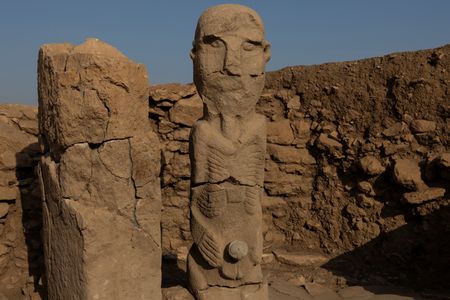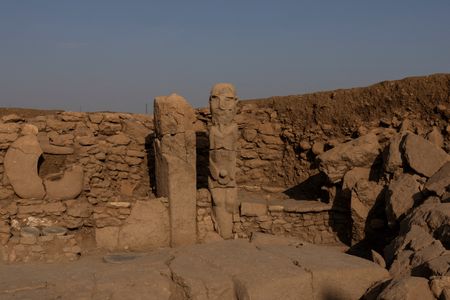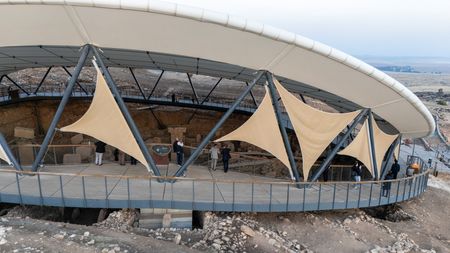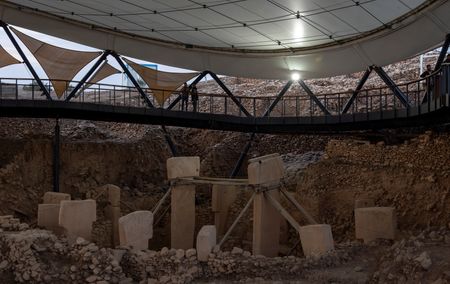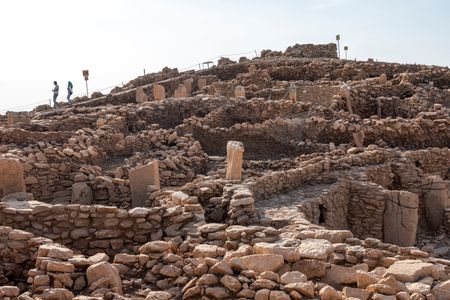By Ceyda Caglayan
SANLIURFA, Turkey (Reuters) -Turkey unveiled dozens of new finds at a major archaeological site in southeast Turkey on Wednesday, giving fresh insight into an area seen as showing humanity's transition from hunter-gatherers to settled societies more than 11,000 years ago.
On a plateau overlooking the fertile plains of what is often called the "cradle of civilisation", the UNESCO World Heritage Site of Gobeklitepe and nearby Karahantepe are transforming archaeologists' understanding of prehistoric times.
Among the latest finds in Sanliurfa province is a statue with a facial expression reminiscent of a deceased individual. Archaeologists said it was a unique discovery in terms of death rituals and symbolic expression among Neolithic communities.
It was one of some 30 artefacts revealed on Wednesday, including human and animal statues, figurines, vessels, plates, necklaces and beads including a human-shaped one.
"What makes these archaeological sites unique is the way they reshape our knowledge of Neolithic history, as well as the transition to settled life," Culture and Tourism Minister Mehmet Nuri Ersoy told Reuters.
He said the sites, which Turkey has dubbed the Stone Mounds project, show that humanity had a far higher level of consciousness in terms of belief, rituals, social organisation and cultural production than previously assumed.
Gobeklitepe is expected to attract around 800,000 visitors this year, he said, illustrating the growing recognition of the site's importance.
The ministry-led project encompasses 12 Neolithic sites of settled communities in Sanliurfa dating back to 9,500 BC, with Gobeklitepe and Karahantepe featuring the world's oldest structures used for gathering and performance rituals.
Among the most striking features at the sites are oval-shaped monumental structures up to 28 metres in diameter surrounded with T-shaped limestone pillars, regarded as representations of humans, with reliefs of animals depicted on some of them.
Archaeologists say one recent excavation at Karahantepe uncovered a T-shaped pillar with a human face, representing the first known depiction of a human face on such a pillar.
"From nutrition to architecture, from the symbolic world to the rituals, the vast diversity of evidence obtained here bring us incredibly close to prehistoric societies," said Necmi Karul, the head of excavations, describing the builders of the structures as skilled craftsmen.
He said that until recently it was assumed that settled life started with agriculture and animal husbandry but the project indicated that these people were still hunter-gatherers but had become settled.
(Writing by Ceyda Caglayan; Editing by Daren Butler and Alison Williams)


